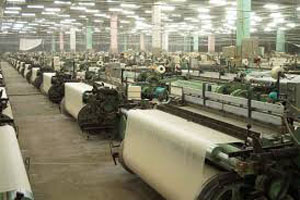
Pakistan's premier industry textile in dilemma
YarnsandFibers News Bureau 2015-08-21 11:00:00 – IslamabadThe All Pakistan Textile Mills Association (APTMA) has threatened to go on a strike if corrective measures are not taken by the government by August 31. There is a full-fledged Ministry of Textiles and a Textile Policy has been announced for the period, 2014 to 2019. Despite all this, Pakistan textile industry appears to be languishing due to neglect and lack of implementation of the Policy.
According to a fact-sheet released by the Institute of Policy Reforms (IPR) on Thursday, over 60 percent of the output of the textile sector is exported. Exports of textiles showed high growth of 10 percent annually from 2001-02 to 2010-11. Since then they have stagnated at under $14 billion. This is despite cumulative depreciation of 19 percent in the value of the Pakistani Rupee and, more recently, the granting of GSP+ Status by the European Union. The latter has led to some diversion of exports, without raising substantially the global volume of exports.
During the last four years, Pakistan has steadily been losing market share to competitors. In textiles, countries like India, Turkey and Vietnam have achieved a significant growth in exports. In clothing, in addition, other countries like Bangladesh, Cambodia, Indonesia, Sri Lanka and Thailand have edged out Pakistani exports. China, of course, continues to be the dominant exporter, with exports of textiles and clothing approaching $ 300 billion, compared to Pakistan's $ 13.5 billion.
In its fact-sheet IPR recommended that there are clearly two policy options. Either, the government moves away from its stubborn policy of maintaining the nominal exchange rate and adjust it downwards, at least to the extent of rise in costs due to recent tax moves and pricing of electricity. For the textile industry, the rise in costs as a percentage of the value of output is 4 percent.
This implies depreciation in the value of the rupee of about 6 percent, after allowing for the rise in the cost of imported component of exports. Alternatively, if the government is unwilling to abandon its present exchange policy, then it may opt for an export rebate scheme covering most exports, similar to the issuance of scrips in India. The rate could be varied, depending on the extent of value-added, with the average at 4 percent of the value of exports. The justification lies in the higher than world prices of energy in Pakistan.
There is urgency for the government to focus on the revival of exports. This is essential not only because of the impending strike by the All Pakistan Textile Mills Association but also because exports have started plummeting. It declined by as much as 17 percent last month. They have to see exports as part of lifeline not only for sustaining external payments position but also for reviving the growth process in the economy.
Apart from this, there are a number of structural factors which have adversely impacted on the industry. First, there is the persistent energy shortage. Frequent outages have limited the effective capacity and raised cost due to the resort to some self-generation. Second, there has been inadequate investment in technology upgrading and replacement by the industry. Import of textile machinery reached a peak of almost one billion dollars in 2004-05. Since then, it has fallen to less than $ 500 million annually.
Key indicators of the loss of competitiveness of the textile sector of Pakistan are, first, the import of cotton yarn for the first time from India since 2013-14 of over $ 200 million. Second, almost 70 percent of Pakistan's exports globally of yarn are to China which dropped by 20 per cent in 2014-15, with the gain primarily to Vietnam.
Although, the Pakistani rupee has remained, more or less nominally stable since January 2015. According to the State Bank of Pakistan the rupee is now overvalued to the extent of 18 percent.
Meanwhile, other countries have devalued their currencies significantly last year; India by 6 percent, Indonesia by 15 percent, Thailand by 9 percent, Turkey by 30 percent and Vietnam by 3 percent. The mighty Chinese Yuan, backed by foreign exchange reserves of $3.9 trillion, has fallen in value by 3 percent in the last few days. Earlier, Japan depreciated the Yen by 22 percent. There is a low-intensity trade war going on in the face of slow growth in world trade, especially of imports by the European Union, Japan and the United States which the Pakistan policy makers probably do not realize it.
India has gone one step further by announcing merger of a number of old incentives into a new Merchandise Exports from India Scheme in its new Trade Policy. This scheme involves the issue of fully transferable scrips (bonus) to exporters against the value of exports. The rate of these scrips varies from 3 to 5 per cent, depending on the destination, type of product and the extent of value added.
The Modi government on the wake of the falling exports in 2014-15 of 1 percent, as compared to an increase annually of over 15 percent in the previous four years announced this scheme.
Market Intelligence
Ask for free sample Report

experience
Customer Base
dedicated team
Countries Served Worldwide









